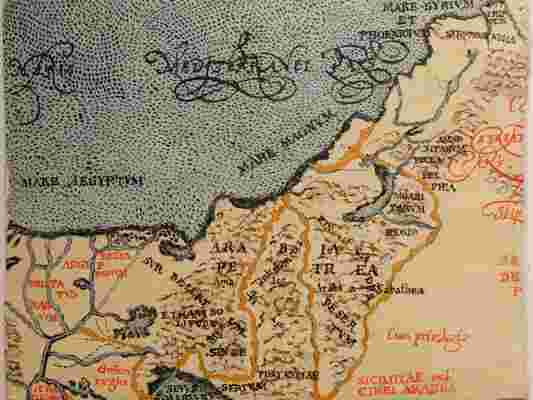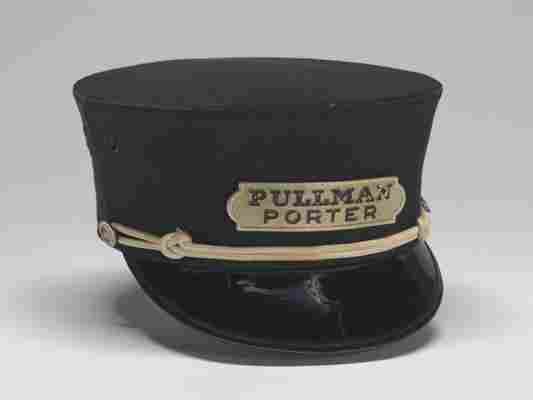Mapping a Different View

Last week I visited The Ann Loeb Bronfman Gallery , a delightful space in the Washington DC Jewish Community Center. Their current show “ L(A)TTITUDES " attempts to mediate a discussion surrounding the borders and boundaries of Israel and Palestine.
On the surface, I expected a historical survey of the area’s cartography, giving perhaps a sterile, graphical representation of the boundaries and as they moved to and fro with the political winds. Happily, this was not the case. The works show more personal views of the effects and repercussions of drawing these lines, whether figuratively with a “security fence" or physically through a look at where a virtual map line falls on the ground. These lines show the inclusions and exclusions, the trusts and distrusts, the hopes and realities, and the “us vs. them."
In the photographic series “The Green(er) Side of the Line," Alban Biaussat documents places and spaces along the Green Line of the 1949 Rhodes armistice agreement, and thereby shows the improbability of separating the physical space of a family’s back patio or a local butcher’s shop that happens to be on the line. Yoav Galai’s “East Jerusalem Outside the Slogans" is a photojournalistic essay that documents the physical wall/fence that runs through East Jerusalem and the neighborhoods it bisects.
Karey Kessler’s “Desert" maps her personal journeys and memories of traveling through and living in Israel. Joyce Kozloff’s love of traditional technique is displayed in a series of small frescos that display how a culture’s societies and biases become evident in the way they draw their maps.
Anna Fine Foer and Doug Beube examine the alternate scenarios. Foer’s collaged “Vayikra" looks at what an absence of Israel could mean to its neighbors. Beube’s “Amendment," an altered atlas, takes the idea a step further by physically zipping other countries onto Israel’s borders.
Wendy Fergusson, the gallery’s director, navigated heated discussions, tensions, and withdrawals of both works and donor support to curate a show that reaches across the line to embrace many difficult and divergent points of view. Such courage in the time of political correctness is both refreshing and commendable.
How Do We Experience Art?

Discussing the preeminence of color in painting last week got me thinking about how we really experience art—with our eyes or in our minds. It seems like such a simple, straightforward question, yet it always stirs controversy.
We don’t hear, smell or taste art (kissing doesn’t count). Above all, it appeals to our sense of sight. Rich colors, overpowering size, delicate details—characteristics like these can be described, but many believe that when it comes to art there is nothing that compares to seeing a work with your own eyes. Ask any art history professor and he or she will wax tirelessly about firsthand viewing and the necessity of seeing art in person, not on a gritty slide. To a certain extent, I’d have to agree. My moment of conversion came at the Galleria Borghese. I had researched and studied Bernini’s work exhaustively; read all the scholarship and seen countless photographs. But as much as I knew that he was a consummate sculptor, nothing prepared me for seeing the Rape of Proserpina with my own eyes. That hand indenting the flesh on that thigh—the virtuosity of it is beyond words, but not beyond sight.
On the other hand, much of modern art has been created around various intellectual orthodoxies. The pursuit of abstract expressionism was about tapping into the essence of painting—the flat canvas and the gesture of the artist. Conceptual art budded in the 1960s and with it came the philosophy that the execution of an artwork was beside the point. It was the compelling idea for the work that was crucial. Even impressionism, credited as one of the most aesthetically pleasing art movements, explored the heady idea that painting should give a sense of immediacy and reflect how the eye interprets motion.
Obviously the answer to this question isn’t mutually exclusive. Appreciating art doesn’t preclude the visual or intellectual. But only after isolating each argument does one get a sense of how effective art is.
American History Museum: Pieces of Our Past

When the National Museum of American History reopens this month after a two-year renovation, visitors will get to see a display of 500 newly acquired and previously unseen objects from the three million-item collection. A new central atrium skylight helps illuminate the heart of the building and the exhibit. "We're shedding new light on American history," says museum Director Brent Glass. Here, six curators talk about the artifacts they're most excited to have on view.
Larry Bird Division of Politics and Reform Campaign Buttons from the 2008 Presidential Election "The kinds of things we collect are truly ephemeral; they have no practical shelf life beyond a political campaign. But, for us, they're prized as symbols of activism and engagement. They're also the closest things we have to a national collection representing the comprehensive history of U.S. campaigns, dating back to George Washington.
"If I were a political candidate, I'd rather have people wearing my button or having my bumper sticker on their car than watching my TV commercials. As low-tech as this stuff is, there is a social and personal presumption that once you're wearing a candidate's button, he or she has got your vote."
Dwight Blocker Bowers Division of Music, Sports and Entertainment Carrie Bradshaw's laptop from "Sex and the City" "The laptop really is an iconic prop, symbolizing Carrie as a chronicler of contemporary society. There's probably nothing else on that show that stands out as much in the memories of viewers, short of the Manolo Blahnik shoes.
"I also feel the laptop conveys the idea that Carrie was a character quite different from the women portrayed in earlier sitcoms. She represents the latest stage in the progression from Lucy Ricardo and Mary Tyler Moore—and, more broadly, the evolution of the role of women in America."
Michelle Delaney Division of Information Technology and Communications, Photography The 540th Personal Camera manufactured by Kodak in 1888 "The original 1888 Kodak camera arrived loaded with film for 100 photographs, and once the buyers took the pictures they sent the entire camera back to Kodak. For $10, buyers could get new film and their camera back. The Kodak slogan was 'You press the button, we do the rest.' About 13,000 of these cameras were sold within the first year.
"Kodak repackaged photography for the masses. And what does every visitor to the museum have in his or her pocket? A camera. So what we're showing is the evolution of that camera more than a century before the age of digital photography."
David K. Allison Division of Information Technology and Communications A 1975 MITS Altair 8800 "Kit" Computer "When the MITS Altair personal computer was introduced in 1975, the company expected to get a small number of orders. Instead, it got thousands. This is a real hobbyist's computer; users made lots of modifications and add-ons. This one even has a homemade keyboard.
"I love it because it speaks to the spirit of innovation. The era of personal computers is fairly recent, and it's interesting to see where it all got started."
Bonnie Lilienfeld Division of Home and Community Life An 18th-century teapot printed with the political slogan "No Stamp Act." "British potters made this sometime between 1766 and 1770 to commemorate the repeal of the Stamp Act, the first direct tax on the American colonies. It was sold to Americans, demonstrating that trade, not love, conquers all.
"The teapot reveals how household objects were linked with the political message that was sweeping the American colonies. It also allows us to consider the role of women in society, since it's something women would have used. There are only two or three known to exist in the United States."
Judy Chelnick Division of Medicine and Science A saw from a surgical set that belonged to John Maynard Woodworth, who became the first Surgeon General of the United States in 1871 "This saw belongs to a set that has everything required for the amputation of an arm or a leg in the 19th century: six trays of surgical instruments in a rosewood case, knives, saws and bone forceps. I don't know how Woodworth would have transported this, because it's not something that he could have strapped on the back of a horse.
"Doctors in the 19th century had their own surgical sets. That changed in the 20th century when surgeons began performing procedures at hospitals. This set is one of the finest American surgical sets of the late 1800s, and it's remarkable that all 80 of the original tools are still intact."




Post a Comment